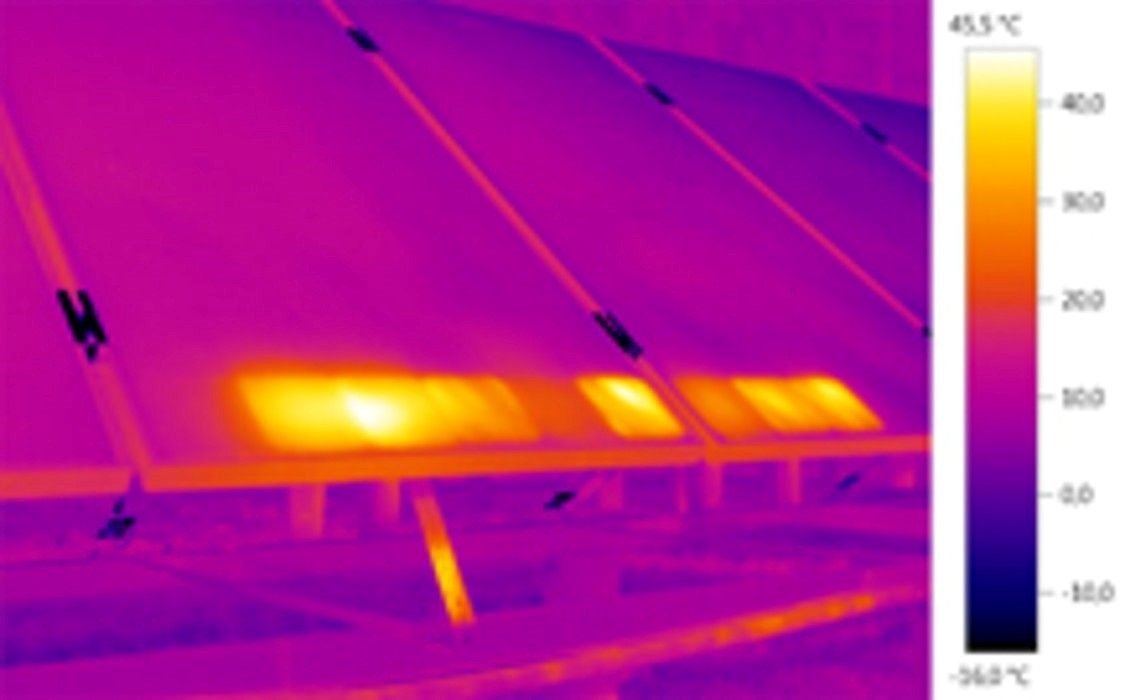Solar Panel Thermography

Thermography is a vital tool for identifying hotspots in solar panels. Overheated cells not only damage the casing material but can also lead to delamination. Shading on a module or a defective cell can shift the module from power production to power consumption, generating heat and resulting in hotspots visible in thermal images. Similarly, a defective or mismatched bypass diode can produce the same effect.
Why Thermography for Solar Panels?
Thermographic inspections play a crucial role in ensuring the performance and longevity of solar panels by addressing:
➤ Quality Assurance: Verifies the proper installation and functionality of PV modules.
➤ Prevention of Power Loss: Detects defects early to avoid yield losses.
➤ Overheating Protection: Identifies overheating cells to prevent long-term damage.
➤ Corrosion Detection: Spots issues with corroded contacts or connectors.
➤ Operational Continuity: Inspections can be performed without halting solar plant operations.
Benefits to Clients
Thermography offers numerous advantages for maintaining solar panel efficiency:
➤ Reliable Operation: Ensures smooth performance throughout the solar module’s life cycle.
➤ Clear Visualization: Thermal imaging provides a clear view of anomalies that may be missed by other methods.
➤ Minimized Downtime: Panels can be inspected during normal operation, avoiding costly shutdowns.
➤ Efficiency in Large-Scale Inspections: Enables quick scanning of extensive solar arrays in a short time.
Thermography is a highly efficient and reliable solution for diagnosing and maintaining the health of solar installations, ensuring maximum energy yield and long-term system reliability
Hotspots in solar panels create two significant issues:
- Reduced Power Production: Cells that consume power instead of producing it decrease the overall energy yield.
- Thermal Impact on Neighboring Cells: Power consumption causes excessive heating, further affecting the performance of adjacent cells.

